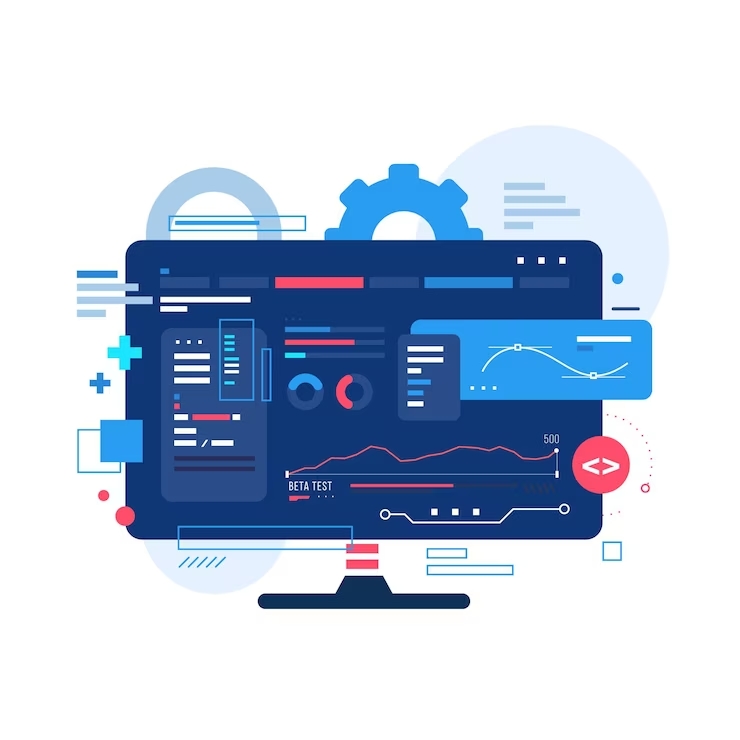Best way to learn web development for beginners?

Web development is the process of designing, creating, and maintaining websites and web applications that are accessible via the internet. It involves a combination of programming languages (such as HTML, CSS, and JavaScript), server-side scripting, and databases to build interactive and visually appealing online platforms to speed up your site. Website developer work on both the frontend, responsible for the user interface and user experience, and the backend, which handles data storage, processing, and server-side functionalities. The field encompasses various specialized roles, including website designer, frontend developers, backend developers, and full-stack developers who handle both frontend and backend aspects. Website development plays a crucial role in shaping the digital landscape, enabling businesses, organizations, and individuals to connect, engage, and share information across the global network.
Starting custom web development as a beginner can be an exciting journey. Here are some steps and requried web development skills for beginners to get started:
- Learn the Basics of HTML, CSS, and JavaScript:
- Choose a Code Editor:
- Hands-On Practice:
- Learn about Responsive Design:
- Explore Frontend Frameworks:
- Understand Version Control:
- Study Server-Side Development:
- Learn About Databases and APIs:
- Practice Regularly and Build Projects:
- Join Online Communities:
- Stay Updated:
Begin by learning the fundamental building blocks of website development and mobile web development. HTML is the structure, CSS is for styling, and JavaScript adds interactivity. There are numerous online tutorials, interactive platforms, and resources available for free that can teach you the basics of these technologies.
Pick a code editor that suits your preferences. Some popular options include Visual Studio Code, Sublime Text, and Atom. A good code editor will make your coding experience more enjoyable and productive.
Start building simple web pages and projects using what you've learned. Practice is crucial to reinforce your understanding and gain practical skills.
Study the benefits of responsive web design that adapt and look good on various devices, such as desktops, tablets, and smartphones. By implementing responsive design, web developers can reach a broader audience, improve user engagement, and enhance the overall accessibility of their websites in an increasingly mobile-centric world.
Once you're comfortable with the basics, consider exploring frontend frameworks like React, Angular, or Vue.js. These frameworks simplify web development and are widely used in the industry.
Learn about version control systems like Git. It helps you track changes in your code, collaborate with others, and revert to previous versions if needed.
Explore backend technologies like Node.js, Python (Django), or Ruby (Ruby on Rails) to handle server-side processes and database interactions.
Familiarize yourself with databases like MySQL, PostgreSQL, or MongoDB to store and manage data in web applications. Understand how to interact with APIs (Application Programming Interfaces) to fetch and integrate data from external sources into your web applications.
Consistent practice and building projects are key to improving your skills. Start with small projects and gradually take on more challenging ones.
Engage with web development communities and forums where you can seek advice, share knowledge, and learn from others' experiences.
The web development field evolves rapidly, so stay updated with the latest trends, tools, and best practices.
Remember, web development is a vast field, and it's okay to take it one step at a time. Focus on learning and improving, and don't be discouraged by challenges. With dedication and persistence, you'll be well on your way to becoming a proficient web developer.
What are the three basic tools of web development?
The basic tools in web development are the foundation for creating and designing websites and web applications. Web browsers serve as indispensable tools for testing and debugging, allowing developers to preview their work and ensure cross-browser compatibility. Together, these basic tools empower web developers to bring their creative visions to life, shaping the digital landscape and enriching the online experience for users worldwide. So if you are waiting for the answer on what tools do you need to learn for web development, then here it is. The three basic tools of web development are:
- HTML (Hypertext Markup Language):
- CSS (Cascading Style Sheets):
- JavaScript:
HTML is the foundational markup language used to create the structure and content of web pages. It provides the elements and tags that define the layout, text, images, links, and other multimedia elements on a webpage.
CSS is used to control the presentation and layout of HTML elements on a web page. It allows developers to apply styles, such as colors, fonts, spacing, and positioning, to enhance the visual appearance of the content.
JavaScript is a programming language that enables interactivity and dynamic content on web pages. With JavaScript, developers can create interactive features, handle user interactions, manipulate data, and modify the webpage content on the fly.
Together, these three technologies form the core foundation of web development, enabling developers to create and design websites that are functional, visually appealing, and responsive to user actions.
